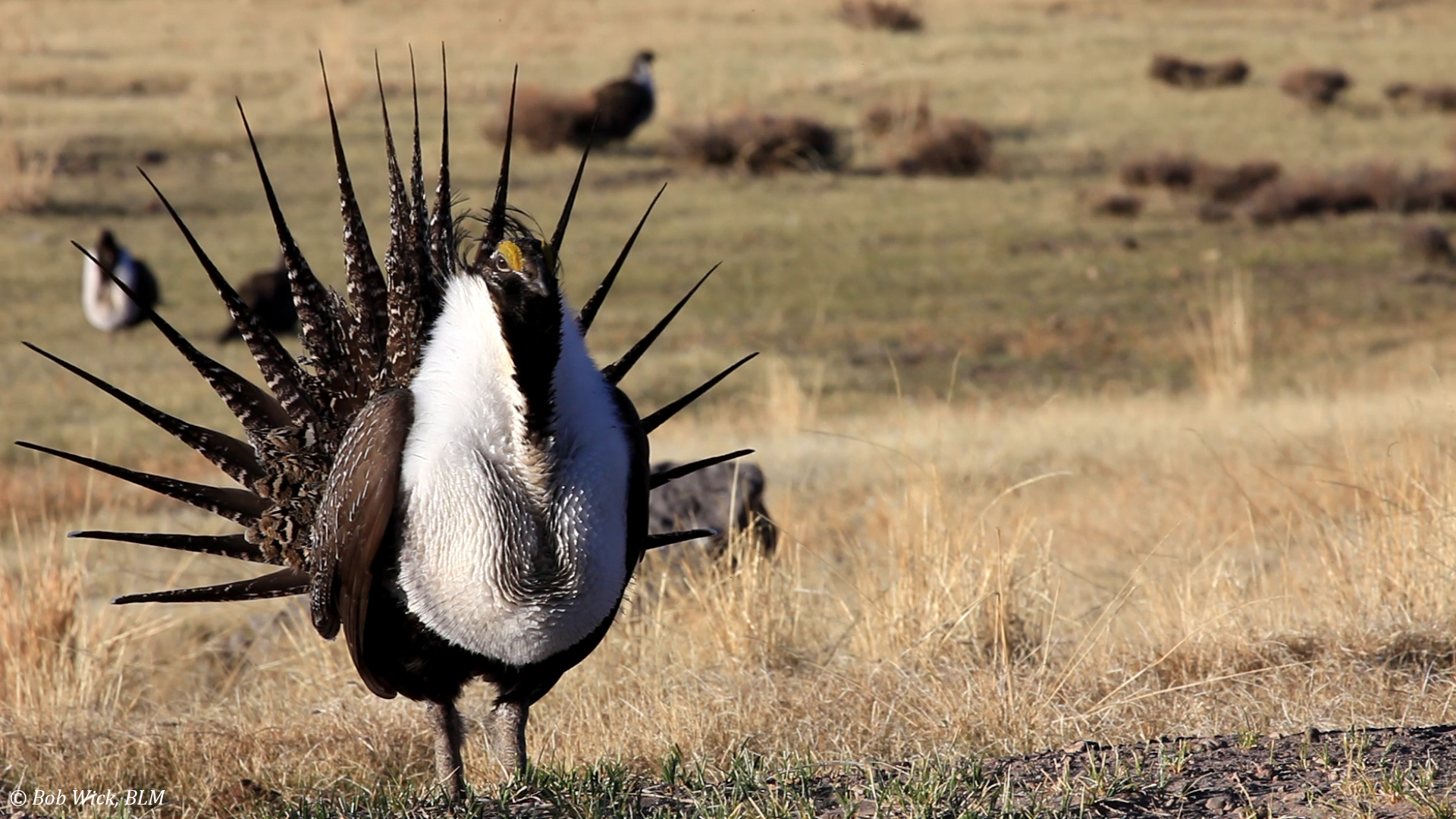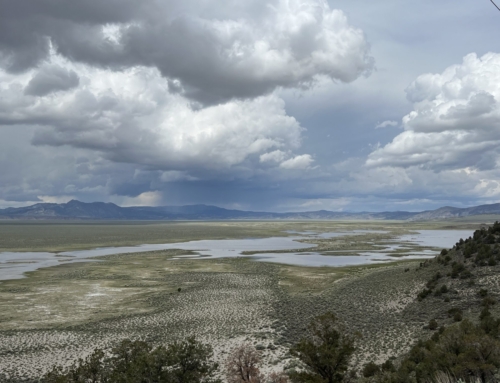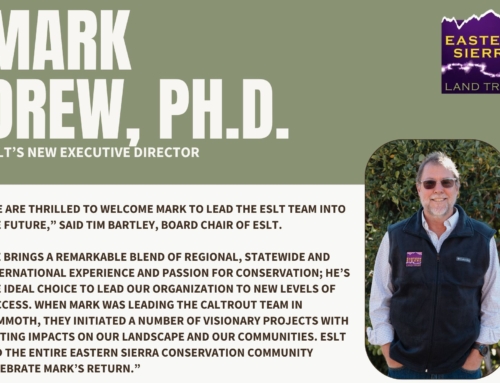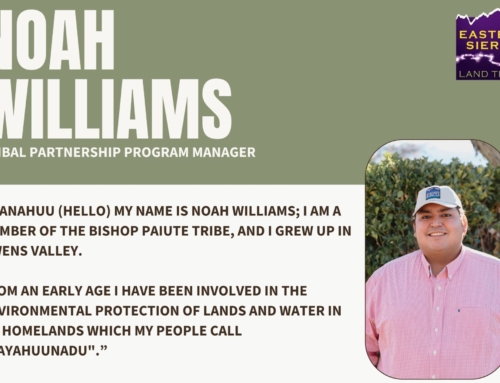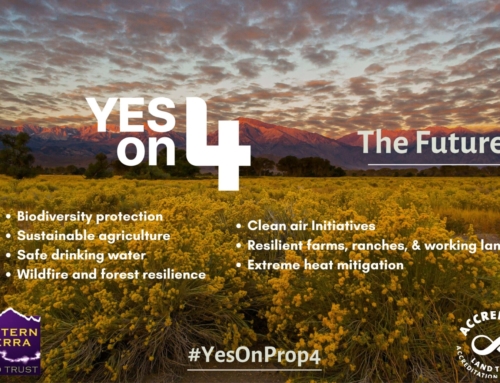Our conservation community has something to celebrate!
That’s because on March 30th this year, the U.S. Fish and Wildlife Service (“USFWS”) announced it is withdrawing a 2013 proposed rule to list the Bi-State sage-grouse as threatened under the Endangered Species Act.
USFWS made this decision after an “extended and comprehensive analysis of the best available science.” They concluded that local conservation actions have and will continue to successfully reduce threats to the Bi-State sage-grouse.
This is good news for all the Eastside conservation professionals and community members who have unified to form what’s called the Bi-State Local Area Working Group (“LAWG”), a group of diverse stakeholders dedicated to bringing the power of local land protection to care for the Bi-State sage-grouse. The LAWG is made up of state and local officials, public and tribal land managers, ranchers, private landowners, scientists, and conservationists, including ESLT.
Sometimes, like in the cases of the Red-Cockaded Woodpecker or the California Condor, the Endangered Species Act serves as a very effective tool for the recovery of a species. In the case of the Bi-State sage-grouse, our uniquely local and collaborative approach is working without the need for the Endangered Species Act. The committed Bi-State partners have seen success in the targeted and specific actions they’ve taken to enhance our local sagebrush ecosystem. Together, we’ve cared for the needs of our local environment using individualized and flexible efforts.
The efforts of ESLT and LAWG have not only worked, but are also being heralded across the nation as an exceptionally successful model for local, collaborative, science-based conservation. And after such a comprehensive analysis by the USFWS, we can rest assured that we’re on the right track to protecting the many unique species that make their homes in the sagebrush, like sage-grouse.
Bi-State sage-grouse are a unique population of Greater sage-grouse that live in the Eastern Sierra and western Nevada. The birds are known for the males’ flamboyant springtime mating displays on traditional dancing grounds, known as leks. This species is a key indicator species for the health of other wildlife and for sagebrush areas generally. This means that if the Bi-State sage-grouse are thriving, there’s a higher likelihood that other species of plants and animals are thriving too.
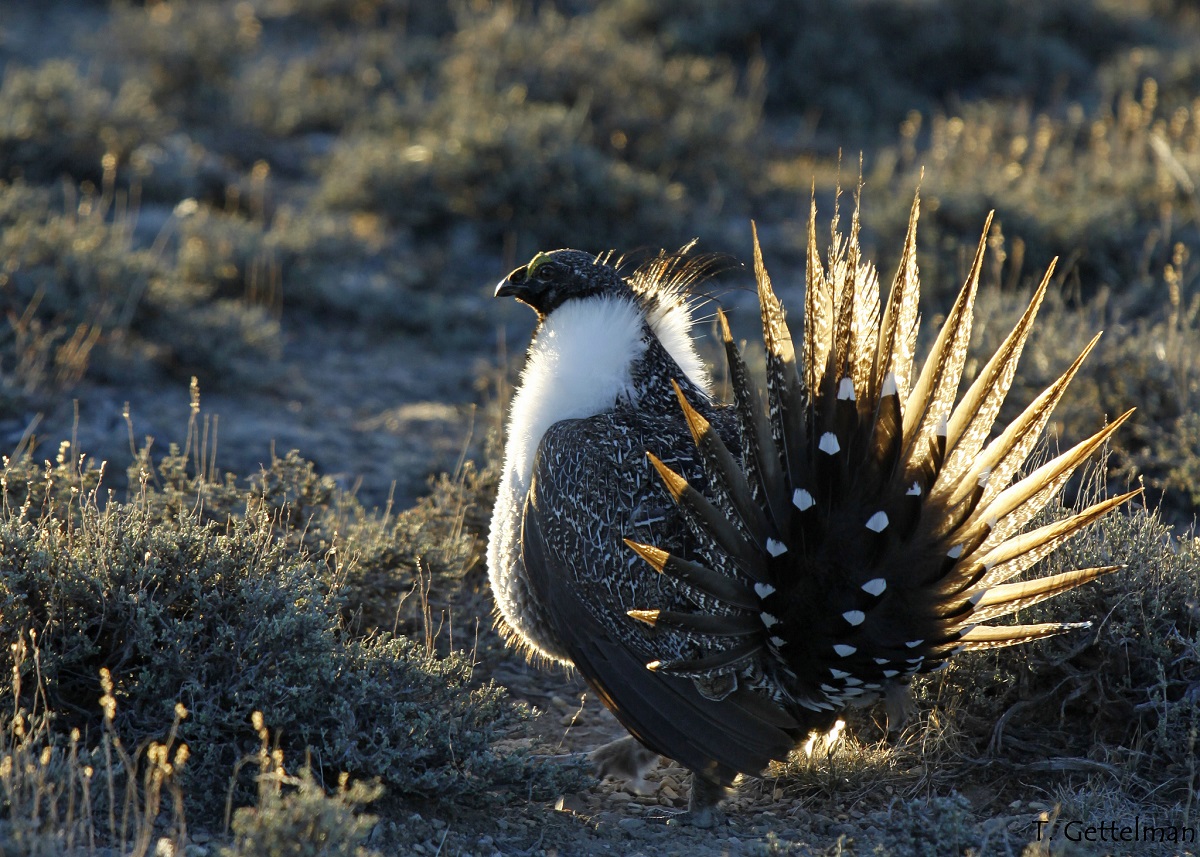
Photo by Tatiana Gettelman
In addition to the Bi-State sage-grouse, mule deer, pronghorn, songbirds, lizards, pygmy rabbits, and more depend on wide sagebrush areas for homes and food.
You’ve helped ESLT do our part by permanently safeguarding thousands of acres of this sagebrush habitat against the threat of future development. Willing private landowners in the Eastern Sierra have partnered with us to create a necessary bridge between private and public land, creating sustainable habitat for iconic Eastern Sierra wildlife. We work with ranchers who support the region’s economy and heritage while also providing the rare wet meadow habitat that sage-grouse chicks and other wildlife need to thrive. In 2018, the U.S. Forest Service and the Bureau of Land Management (“BLM”) named ESLT the National Conservation Leadership Partner of the Year, in recognition of this successful work.
Our work is funded by donations, private foundations, and federal and state grants. And the majority of federal grant awards we’ve received for land protection since 2014 have explicitly focused on helping protect sage-grouse habitat. Such funding has provided us with a strong foundation for the work you help us do safeguarding and caring for critical sagebrush habitat and the wildlife that call it home.
You’ve also helped us, along with our agency partners like the BLM, on sage-grouse volunteer workdays over the years. Our dedicated volunteers have restored meadows, removed trash, controlled invasive plants, installed perch deterrents to reduce nest predation, removed unnecessary fences, marked fences to make them more visible for sage-grouse, and much more.
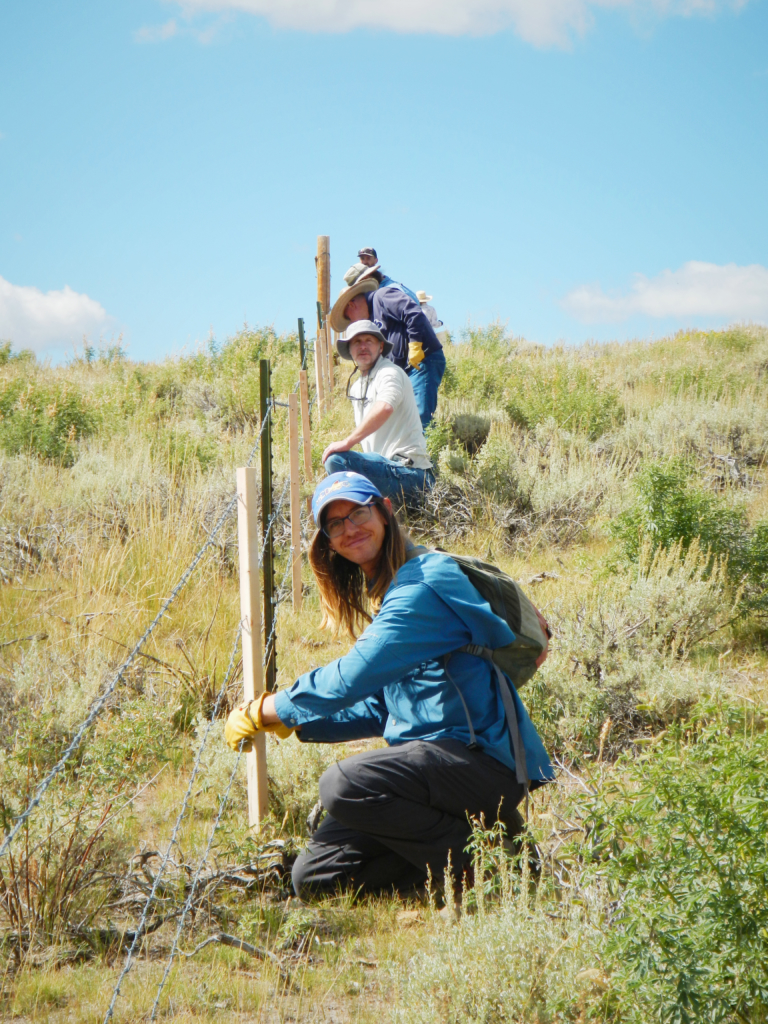
During our sage-grouse work day in fall 2019, volunteers tagged fences in the Bodie Hills. The tags make fences more visible for Bi-State sage-grouse. Photo by Sus Danner, ESLT.
It’s great to have some hopeful news right now, as our world navigates the current COVID-19 pandemic. Once it is safe to do so, we look forward to inviting you back onto the land to work side by side with us as we care for sagebrush ecosystems. Future sage-grouse workdays are planned for this autumn, and your safe participation and support make a positive difference for our iconic Eastern Sierra land and wildlife. Thank you for being a part of this impactful, community-driven conservation.
Learn more about how ESLT protects critical wildlife habitat.
Read the press release from the Natural Resources Conservation Service.
Read the press release from the U.S. Fish and Wildlife Service.


